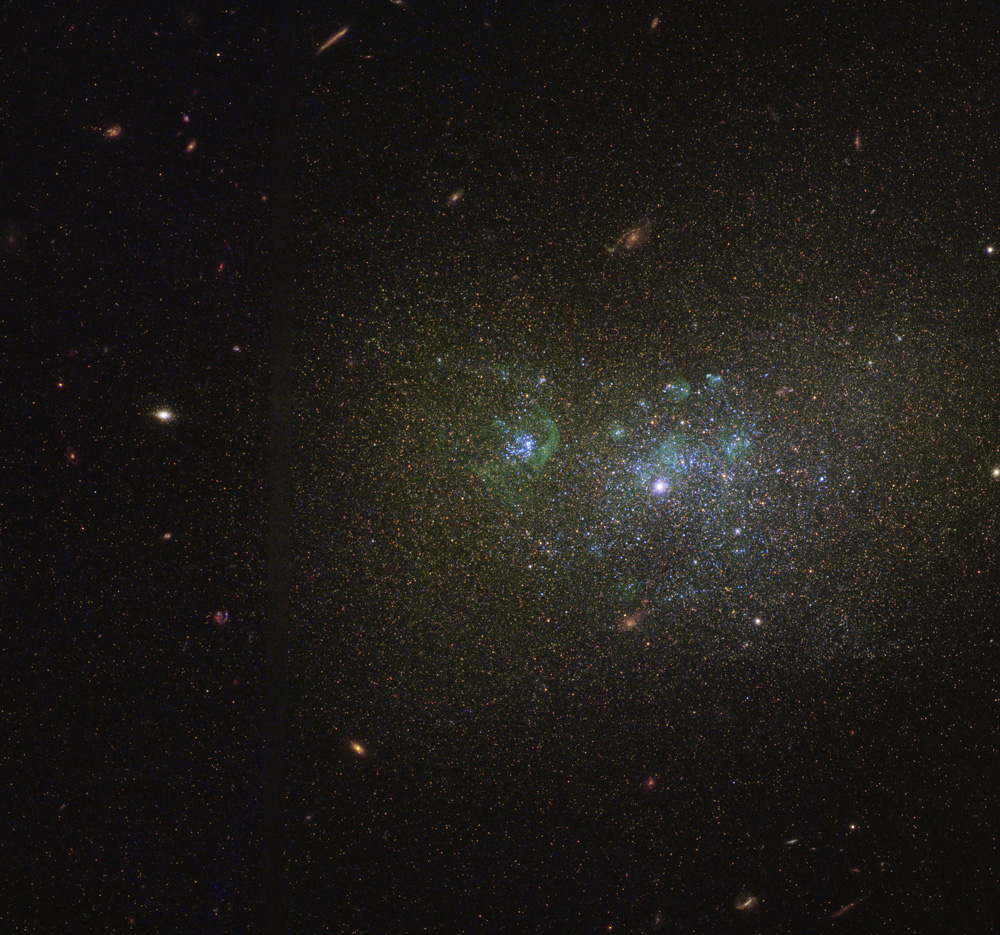
NGC 5238 (2014)
I have been working on a couple of other things and also going outside since the weather is so nice this summer so I haven’t had as much time to poke around the archive lately. Today’s poking around was directed at some LEGUS data (Proposal 13364). These data are especially inviting because they are all UV and blue, which is something that is often missing in the pictures I process. It’s nice to have enough channels to create a three color image.
For this dwarf galaxy, infrared, red, blue, and ultraviolet light was available. I went ahead and combined all of the blue and UV together in the blue channel, put the red light in the green channel and the infrared in the red channel. The infrared shares its light with the blue a little to help balance the colors since green is missing. I’ve done this in the past and for whatever reason it lets things look a little more natural. One thing that would add a lot to this image would be some H-alpha data. You can see some greenish clouds in there. Those would be nice and red if I had some H-alpha to work with.
The blurry vertical line is the chip gap. It was present for F814W and F606W. Anyway, I filled it in with that blurred cloned data so it would be less distracting. I would have cropped it away and not included it at all, but there is something very interesting on the left side.
Do you see that bright, disk-like white cluster of stars? That’s weird. I would have counted it as a background galaxy for its shape, but if you zoom in closely, it’s clear that there are individual stars in there. It looks a lot like a globular cluster except for its odd shape. Where did it come from? Why is it shaped like this? Why is it associated with this dwarf galaxy? It’s not something I’ve seen before. I’ll be looking out for them in the future for sure. Maybe I am missing something. It’s been postulated that ellipsoid globular clusters are remnants of former galaxies. There are a couple of them in Andromeda and our Milky Way, which are big spirals you would expect to shred a few smaller galaxies over time. This dwarf? Did this dwarf pick on an even dwarfier dwarf?
F814W and F606W came from Proposal 10905
Red: HST_10905_19_ACS_WFC_F814W_sci
Green: HST_10905_19_ACS_WFC_F606W_sci
Blue: WFC3 / UVIS F275W + F336W + F438W (All three from LEGUS)
North is NOT up. It is 70.4° clockwise from up.
Copyright information:
Hubble data is public domain, but I put a lot of work into combining it into beautiful color images. The minimal credit line should read: NASA / ESA / J. Schmidt

This work is licensed under a Creative Commons Attribution 3.0 Unported License.


